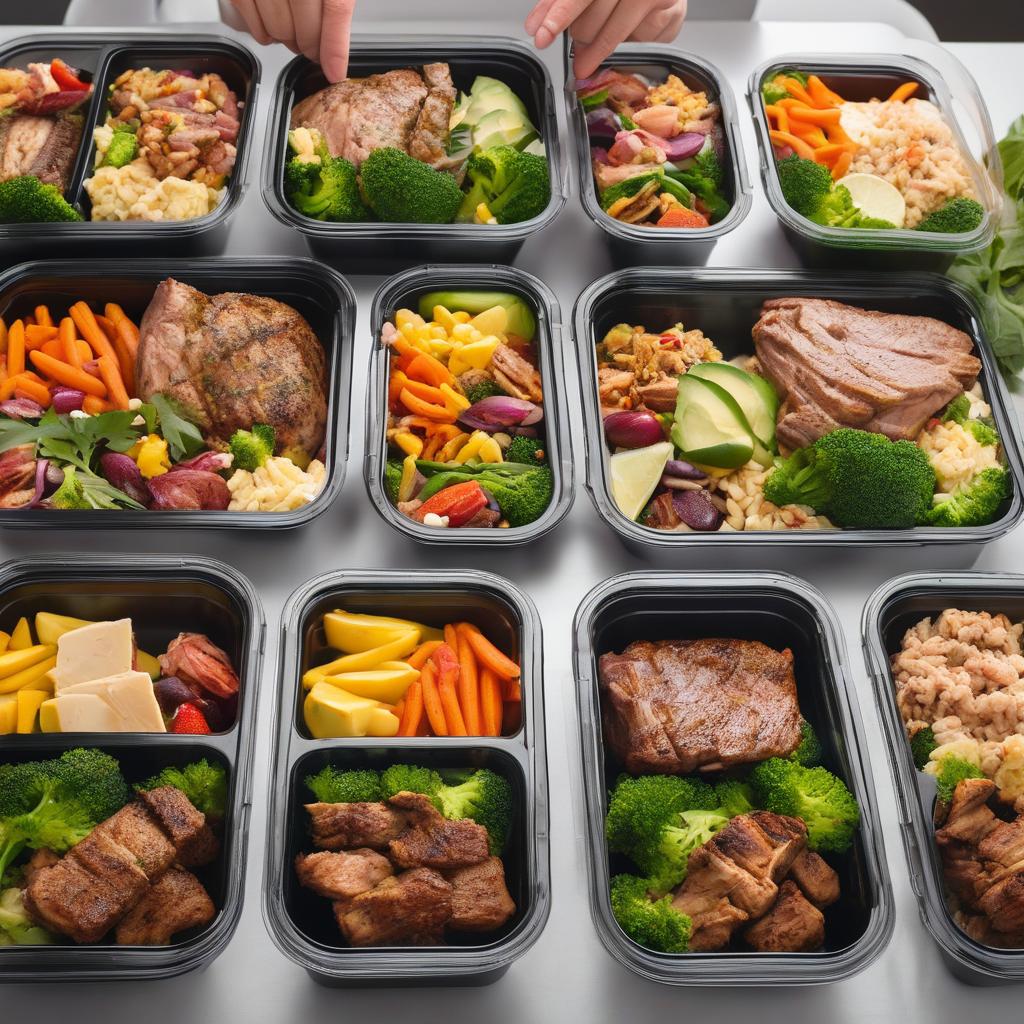Are you tired of the endless cycle of meal planning, grocery shopping, and cooking? Imagine having delicious, healthy meals delivered right to your doorstep, perfectly tailored to your tastes and dietary needs. That’s the beauty of a custom meal prep service! In this guide, we’ll walk you through everything you need to know to launch your own custom meal prep business, from menu planning to delivery logistics. Get ready to revolutionize mealtime for busy individuals and families!
Understanding the Appeal of Custom Meal Prep
Before diving into the logistics of starting a custom meal prep service, let’s explore why this business model is so appealing to modern consumers. In today’s fast-paced world, many people struggle to find the time and energy to plan and prepare healthy meals from scratch. Custom meal prep services offer a convenient solution, allowing customers to enjoy chef-prepared meals without the hassle of shopping and cooking.
What sets custom meal prep services apart is their focus on personalization. Unlike traditional meal delivery services that offer a one-size-fits-all menu, custom meal prep services tailor each meal to the individual customer’s preferences, dietary restrictions, and nutritional goals. Whether you’re vegan, gluten-free, or just craving a specific cuisine, a custom meal prep service can cater to your needs.
Identifying Your Niche and Target Audience
When launching a custom meal prep service, it’s essential to identify your niche and target audience. Consider what sets your service apart from competitors and who your ideal customers are. Are you targeting busy professionals, fitness enthusiasts, families with dietary restrictions, or all of the above?
To help you narrow down your niche, here are some potential target audiences for a custom meal prep service:
| Target Audience | Description |
|---|---|
| Busy professionals | Individuals who lack the time or energy to cook but still prioritize healthy eating. |
| Fitness enthusiasts | People looking for convenient, nutritious meals to support their active lifestyles and fitness goals. |
| Dietary restrictions | Individuals with specific dietary needs, such as gluten-free, vegan, or paleo diets. |
| Families | Busy families seeking wholesome meals that appeal to both parents and children. |
Once you’ve identified your target audience, conduct market research to understand their preferences, pain points, and willingness to pay for your services. This information will help you tailor your menu options and marketing efforts to attract and retain customers.
Developing Your Menu and Recipes
Now comes the fun part—developing your menu and recipes! When designing your menu, aim for a balance of variety, nutrition, and flavor to appeal to a wide range of tastes and dietary preferences. Consider offering a mix of cuisines, protein options, and side dishes to keep your menu fresh and exciting.
Here are some tips for developing your menu:
- Start with a core menu of popular dishes, then rotate seasonal specials and customer favorites to keep your menu dynamic.
- Include options for different dietary preferences, such as vegetarian, gluten-free, and low-carb meals.
- Source high-quality, fresh ingredients from local suppliers whenever possible to ensure the best flavor and nutritional value.
- Experiment with different cooking techniques and flavor profiles to create unique and memorable dishes.
When developing your recipes, prioritize simplicity, convenience, and nutrition. Aim for recipes that are easy to prepare, transport, and reheat, without compromising on taste or quality. Consider offering customization options, such as protein choices, portion sizes, and side dish substitutions, to cater to individual preferences.
Setting Up Your Kitchen and Equipment
Before you can start cooking up a storm, you’ll need to set up your kitchen and invest in the right equipment. Depending on the scale of your operation, you may need a commercial kitchen space with professional-grade appliances and storage facilities.
Here are some essential pieces of equipment you’ll need for your custom meal prep service:
- Commercial refrigerators and freezers for storing ingredients and prepared meals.
- Industrial ovens and stovetops for cooking large batches of food.
- Food processors, blenders, and mixers for chopping, blending, and mixing ingredients.
- Storage containers and packaging materials for portioning and packaging meals.
- Food safety equipment, such as thermometers and gloves, to ensure compliance with health and safety regulations.
When setting up your kitchen, prioritize efficiency, cleanliness, and organization to streamline your operations and maintain food quality and safety standards. Consider investing in automation and technology solutions to optimize your workflow and minimize manual tasks.
Managing Orders and Delivery Logistics
With your kitchen up and running, it’s time to start taking orders and delivering meals to your customers’ doorsteps. Implementing an efficient order management and delivery system is key to ensuring a smooth and seamless customer experience.
Here are some tips for managing orders and delivery logistics:
- Set up an online ordering system on your website or mobile app to allow customers to browse your menu, place orders, and schedule deliveries.
- Offer flexible delivery options, such as same-day or next-day delivery, to accommodate different customer preferences and schedules.
- Invest in reliable transportation and delivery vehicles to ensure timely and safe delivery of meals.
- Implement tracking and communication systems to keep customers informed about the status of their orders and delivery ETA.
- Establish protocols for handling customer inquiries, complaints, and order modifications to provide excellent customer service.
Consider partnering with third-party delivery services or hiring dedicated delivery drivers to expand your delivery radius and reach more customers. Additionally, explore opportunities for subscription-based services and meal plans to encourage repeat business and customer loyalty.
Marketing and Promoting Your Service
Now that your custom meal prep service is up and running, it’s time to spread the word and attract customers! Developing a comprehensive marketing strategy is essential for building brand awareness, generating leads, and driving sales.
Here are some effective marketing strategies to consider:
- Utilize social media platforms to showcase your menu, share cooking tips, and engage with your audience.
- Partner with influencers, food bloggers, and local businesses to reach a wider audience and generate buzz around your brand.
- Offer promotions, discounts, and referral incentives to incentivize new customers to try your service and


